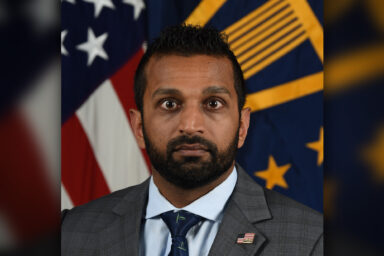The Chattanooga shootings in which nine Marines were gunned down by a 24-year-old shooter is one of a long string of such unnerving events. Early word from law enforcement suggests the attack, like so many others in recent years, is being blamed on a “lone wolf”—someone with no connection to known terrorist or other organizations. The authorities almost always assure us that such incidents are isolated, carried out by individuals who are either mentally ill or irrationally hostile to “our way of life.” Back in 2012, WhoWhatWhy Editor-in-Chief Russ Baker questioned this analysis. Examining the larger historical role such violence has played, Baker shows how certain incidents—including “false flag” attacks instigated by governments but blamed on dissidents—have radically transformed societies. His article is as relevant today as ever.
Just before the opening of the London games, a former Olympic Committee executive declared in a New York Times interview that he had confidence in how this year’s spectacle would unfold:
“I think in the end London will more than hold its own against any previous Games. The only black cloud for me is the security agenda and whether there is some crazy, as they say, lone wolf out there.”
As they say…some lone wolf.
If that gives you chills, you aren’t alone. We’ve had enough experience to know that these statements shouldn’t be taken lightly. Nor should the underlying principle go unchallenged: that only deranged individuals provoke mayhem by design.
Media reports and government statements pretty much reduce terror sponsors to two types: the “lone wolf,” and countries and entities in current ill repute. To be sure, for many, the archetype of Olympic terror is the organized attack: Palestinian Black September members taking the Israeli team hostage at the 1972 Munich games, and the bloody climax. Since then, we’ve also had our share of lone (or allegedly lone) gunmen and bombers, and of (allegedly) sponsored terror by identified enemies.
Certainly, Western countries are quick to accuse disfavored regimes, with uneven levels of accuracy, of atrocities that those regimes quickly deny. Recently, Iran has been accused of fomenting numerous acts of terror, including bombing a bus full of Israelis on vacation in Bulgaria, and unverified allegations of planned massacres and mass rapes have been effective tools in building public support for war in Libya and Syria.
History has shown us, however, that acts of violence, with or without declared sponsorship, are not the exclusive province of crazy loners or renegade regimes. In fact, we know from experience that, as horrendous as it sounds, those in power have sometimes terrorized their own populace while blaming the violence on others. The reasons for this vary widely, but include justifying retributive acts abroad or domestic repression.
One classic technique of creating disorder to justify subsequent repression or military action is the “false flag” attack, so named to describe a ship’s flying an enemy flag while attacking one of its own country’s vessels. The cases in which such attacks were intended to become the basis for a severe reaction could fill a book. Here are a few:
—The Reichstag fire, Berlin, 1933: blamed on Communists but most likely instigated by the Nazis to justify their power grab and subsequent suspension of basic liberties
—Operation Northwoods, Washington, 1962: a plan proposed by high government officials, involving American forces masquerading as Cubans attacking American targets. Deaths and injuries of U.S. citizens anticipated. Rejected by President Kennedy.
—Deaths of civilians during Buddhist protests in Hue, Vietnam, during June, 1963, caused by plastic explosives. Allegations that only the CIA possessed such explosives, and that they were thrown by a Captain James Scott. The bombing campaign, blamed on the government of South Vietnam, increased unrest in the country, destabilized the Diem regime, led to a coup, and contributed to the escalation of American involvement in that country.
—Gladio: The CIA-sponsored. clandestine “stay-behind” NATO network in post-World War II Europe, believed to be tied to right-wing terror attacks that were blamed on the Left. (see the book Puppetmasters on political terrorism in Italy.)
—The Apartment House Bombings: A wave of bombings in Russia, 1999, that justified Moscow’s intervention in Chechnya, and paved the way for Vladimir Putin’s presidency. (see Chapter 2, Darkness at Dawn)
—Contacts between the 9/11 hijackers and the Saudi elite, described in an exclusive WhoWhatWhy report, which you can read here.
As should be clear from this list, the use of deadly “false flag” operations to gain strategic political advantage is not exclusive to regimes of any particular ideology. The lone wolves, meanwhile, are certainly out there, but they’re not all as solitary as they might appear.



